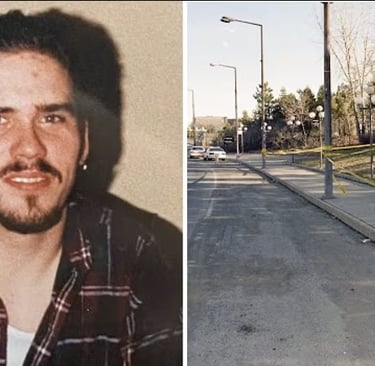Vancouver Suspect in 1996 Ottawa Cold Case Homicide Identified Through DNA Analysis
Shraddha Tripathy
1/7/20252 min read


The 1996 homicide of Christopher Smith, a 22-year-old man fatally stabbed on Ottawa’s Portage Bridge, has finally seen a breakthrough. Lawrence Diehl, 73, of Vancouver, has been charged with second-degree murder, thanks to advancements in forensic DNA analysis and genetic genealogy.
Smith was attacked while walking home with his cousin in the early hours of April 12, 1996. Despite extensive initial investigations, the case went cold until 2020 when Ottawa Police reopened it with hopes of leveraging new DNA technologies.
Forensic Breakthrough
DNA collected from the crime scene was sent to Othram Inc., a Texas-based forensic genomics lab specializing in law enforcement cases. The lab created a detailed DNA profile that was uploaded to public ancestry databases GEDmatch and FamilyTreeDNA, which allow access for law enforcement investigations.
Using these tools, Toronto Police genealogists pieced together a family tree, narrowing down potential suspects. Ottawa investigators later confirmed their findings by collecting a cast-off DNA sample from Diehl in B.C.
“This technique acts as a tip, focusing investigations toward potential suspects,” said Sgt. Chris O'Brien of the Ottawa Police Service. “From there, traditional police work takes over.”
The Suspect’s Background
Lawrence Diehl, a retired engineer and former B.C. Soccer president, was arrested in Vancouver on Dec. 10 and transported to Ottawa. Police confirmed he was in Ottawa for work-related reasons in 1996.
Diehl’s LinkedIn profile lists extensive experience as a meteorologist and in engineering and management roles, including serving as director of Canada Soccer from 1998 to 2002. He received the Canada Soccer Award of Merit in 2003.
The Original Investigation
According to retired Ottawa police investigator Randy Wisker, a critical early lead in the case came from a blood-stained payphone near the crime scene. Investigators believed the assailant had used the phone to call 911 shortly after the stabbing. However, despite playing the recorded call in the media, the case stagnated.
Wisker expressed hope for DNA technology even decades ago. “It was always in the back of my mind that something could come up,” he said.
Broader Implications of Genetic Genealogy
The Smith case joins a growing list of cold cases solved through genetic genealogy, including the high-profile conviction of Ibrahim Ali in B.C. and the 1987 double homicide of Tanya Van Cuylenborg and Jay Cook.
Ottawa Police are now appealing to the public for more information about Diehl’s movements and activities in Ottawa in 1996.
Next Steps
Diehl appeared in court on Dec. 14, and the investigation remains ongoing. Police have urged anyone with relevant information to contact them.
This case highlights the transformative power of DNA technologies in delivering long-overdue justice.
News
Stay updated with the latest BC news stories, subscribe to our newsletter today.
SUBSCRIBE
© 2025 Innovatory Labs Inc.. All rights reserved.
LINKS
